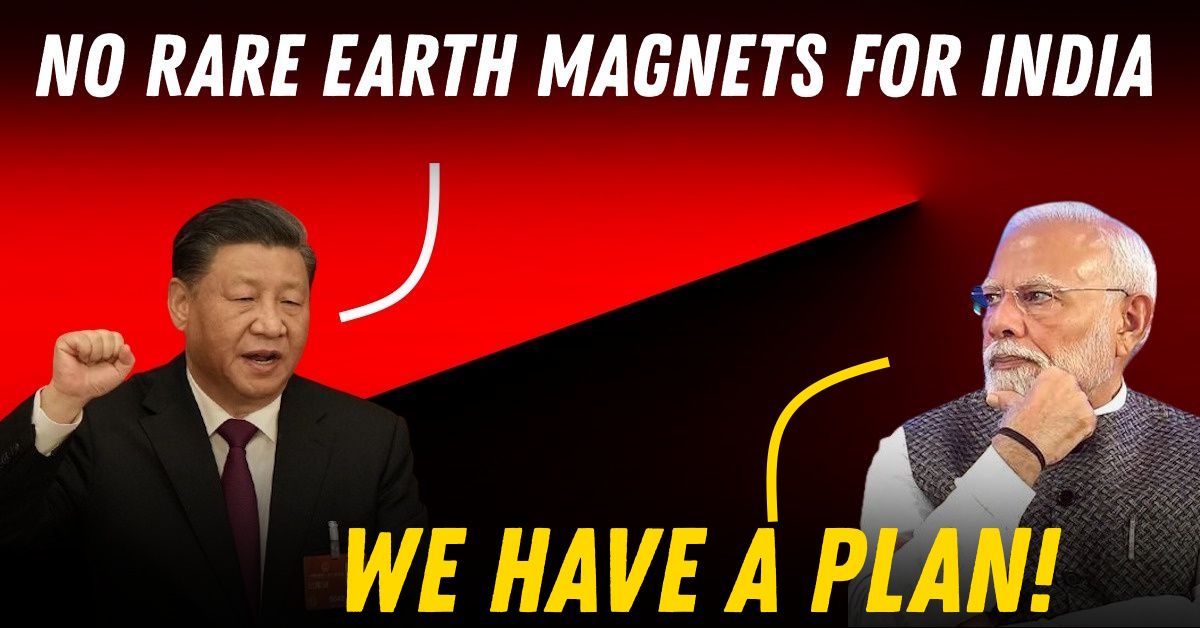How Government Plans To Ensure That China Can't Mess With India's EV Industry


India’s electric vehicle sector is on a steady rise, driven by local demand, favourable policies, and ambitious automakers. But there’s a quiet threat lurking beneath the surface: the country’s heavy reliance on China for critical EV components, especially rare earth magnets. These magnets power the motors inside electric vehicles, and China currently controls nearly 90 percent of the global supply. To reduce this vulnerability, the Indian government is now working on a multi-pronged plan that includes financial incentives, domestic mining, and strategic partnerships.
At the centre of this issue lies a group of elements known as rare earths, particularly neodymium and praseodymium. These materials are essential in manufacturing permanent magnets used in EV motors. China not only mines most of the global rare earth supply but also processes it into finished components. This dominance gives it massive leverage over countries trying to build their EV ecosystems, and India is no exception.
As more electric scooters, bikes, and cars hit Indian roads, the demand for these magnets is expected to rise sharply. Without domestic alternatives, the sector risks being exposed to price shocks, supply disruptions, and geopolitical manipulation. The government recognises this and is now taking concrete steps to build a local supply chain.
One of the key moves on the table is a new fiscal incentive scheme to support the domestic production of permanent magnets. Much like the Production Linked Incentive (PLI) scheme rolled out for battery manufacturing and semiconductors, the proposed policy would offer capital support and tax benefits to companies willing to set up magnet production facilities in India.
The idea is simple: make it financially viable for local and foreign firms to invest in magnet-making here rather than sourcing from China. The government is also looking at how existing industrial corridors and manufacturing clusters can be aligned to host these facilities, thereby accelerating the build-out of a magnet ecosystem.
Beyond manufacturing, the raw material supply is another area receiving attention. India possesses rare earth deposits, especially in coastal regions and states like Andhra Pradesh and Tamil Nadu. Until now, the focus has largely been on exporting these raw materials or processing them in limited quantities.
That may soon change. The government is pushing to ramp up rare earth exploration and processing domestically, with support from the Department of Atomic Energy and state-run enterprises. The aim is to move up the value chain, from merely digging out the minerals to refining them and turning them into high-value components used in EVs.
This would also create a strategic reserve of rare earths, providing a buffer against global supply disruptions. However, rare earth mining comes with environmental and regulatory challenges. Addressing these without delaying progress will be crucial.
India is also exploring partnerships with countries like Japan, Australia, and the US to access both raw materials and technology. These nations are themselves working to diversify their supply chains away from China. Collaborations could involve setting up joint ventures, signing long-term supply agreements, and sharing processing technologies that India currently lacks.
For instance, Australia has large rare earth reserves and the infrastructure to refine them, while Japan has invested heavily in rare earth recycling and magnet innovation. Tapping into such expertise could fast-track India’s self-reliance goals.
The threat isn’t hypothetical. In recent years, China has used its grip on rare earth exports as a bargaining chip in trade wars and diplomatic standoffs. If India’s EV industry becomes too dependent, even a small disruption could stall production and derail timelines for electrification.
More importantly, this isn’t just about electric vehicles. Rare earth magnets are used in wind turbines, defence systems, consumer electronics, and more. Reducing import dependence now will serve broader strategic interests in the long run.
India has made bold strides in battery manufacturing and EV production. But unless it acts swiftly to secure its magnet supply chain, all that progress could be held hostage by external forces. The government's current plans indicate a clear intent to tackle the issue, but execution will be key. The next two to three years will determine whether India can truly future-proof its EV dream or remain vulnerable to a supply chain it doesn't control.